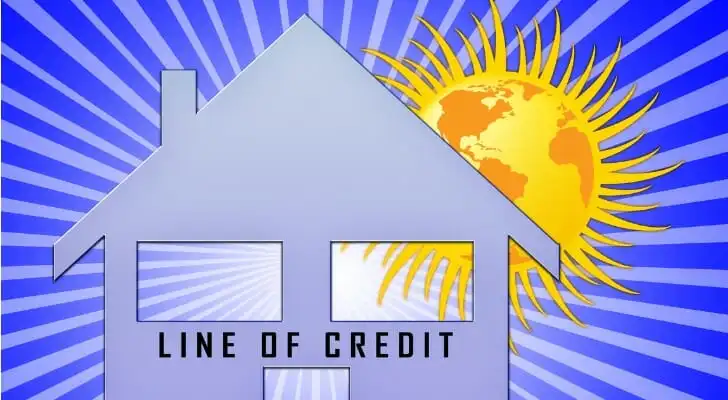Bridge loans and home equity lines of credit (HELOCs) are short-term financing tools commonly used in real estate. While bridge loans offer temporary funding to cover the gap between buying a new property and selling an existing one, HELOCs allow borrowers to tap into their home’s equity as a revolving line of credit. Both options can help with purchasing and selling property, but they work in different ways. Comparing their terms, costs, and repayment structures can help you decide which option best fits your financial situation.
Consider working with a financial advisor when you seek short-term financing for a real estate property.
How a Bridge Loan Works
Bridge loans are used in consumer finance when you want to sell your home and buy another simultaneously. If your current home is for sale and you find another home you want to buy, a bridge loan can serve as short-term financing until your current home is sold or until the mortgage on the new home comes through. It serves as interim financing for your new home.
For example, iIf you still have a mortgage on your current home and are waiting for it to sell, a bridge loan can provide the down payment. You would then pay back the bridge loan with the proceeds you receive from the sale of your current home.
Bridge loans typically have a term of one year or less with a higher interest rate than many other financial instruments. Rates may be 2% to 3% higher than a 30-year fixed-rate mortgage, and there may even be another percentage point or two added onto that rate to cover fees and administrative expenses. A bridge loan also usually requires collateral as security.
Both the higher interest rates and the requirement of collateral are due to the fact that e bridge loans can be risky for lenders to provide. Often, the homeowner still has to make a mortgage payment on their current home, plus a second payment on the bridge loan.
Sometimes, terms can be negotiated with the lending institution to require payment at the end of the term for the bridge loan instead of on a monthly basis. In this setup, the bridge loan and all accumulated interest are due and payable when your current home is sold.
Most lenders only offer bridge loans that are equal to 80% of the combined value of the two loans. You must have enough equity in your home to be able to qualify. Lenders also look for low debt-to-income ratios when qualifying applicants for a bridge loan.
What Is a Home Equity Line of Credit (HELOC)?

A HELOC is a financial product that allows you to tap into the equity of your home. Whereas a home equity loan is dispersed to you as a lump sum, a HELOC is a line of credit established for you by the lending institution. You can borrow up to your approved credit limit, pay off your balance and then borrow it again. The collateral for your HELOC is your home, though, so non-payment would put it at risk.
HELOCs tend to have very competitive interest rates and typically no closing costs. They are usually adjustable rate loans, meaning the interest rate fluctuates with market conditions.
You can use a HELOC in the same way you use a bridge loan if you are trying to purchase a new home. Just like with a bridge loan, you can use the proceeds from a HELOC to make the down payment on a new home, along with the payments on your current home, while you wait for your current home to sell.
HELOCs are usually only granted to creditworthy borrowers. Lenders typically require you to have at least 20% equity in your current home to qualify.
Differences Between a Bridge Loan and a HELOC
HELOCs and bridge loans are two financial tools that can be used to accomplish similar goals, if used correctly. However,they each come with distinct advantages and disadvantages.
For starters, HELOCs are cheaper than bridge loans. A bridge loan is considered a high-risk source of short-term financing, as it’s a payment you’ll make alongside your current mortgage payment. Because of this risk, bridge loans generally have higher interest rates, plus other fees.
In addition, using a HELOC may mean you can enjoy some tax deductibility from the interest payments you make on it. However, that’s only if you itemize your deductions. This is not true for a bridge loan, which, again, gives an edge to HELOCs.
Another distinction is that you don’t have to repay the amount you draw down from a HELOC during the draw period, when you can access your credit whenever you need it, up to the limit. The repayment period may not begin for as long as 10 years down the road. A bridge loan, however, is disbursed as one lump sum, which could be very important if you need a large influx of cash. On the flipside, you’ll then need to make payments on it immediately.
Examples of When to Use a Bridge vs. a HELOC
A bridge loan tends to be most useful when you need fast cash to buy a new home before your old one sells. Imagine you’ve found your next house in a hot market where sellers won’t wait. A bridge loan would give you the lump sum for a down payment right away, even if your current home hasn’t closed. Once your old home sells, you could then use the proceeds to pay off the bridge loan. The tradeoff is a higher interest rate and fees, but the speed can make the difference in securing the property.
A HELOC may be a better fit when you have significant equity in your home, and you don’t need all the cash at once. Suppose you’ve built up 40% equity in your current home and want to pull out funds to cover a down payment. A HELOC lets you borrow only what you need, pay interest on just that portion and keep drawing as needed during the draw period. It’s cheaper than a bridge loan and offers flexibility, though the drawback of a HELOC is that you need good credit and enough home equity to qualify.
In slower housing markets, a HELOC can give you time and flexibility without forcing a quick sale. In fast markets, however, a bridge loan may be the tool that lets you move forward immediately. The right choice depends on your timing, your equity and your tolerance for higher borrowing costs.
Bottom Line

Whether you choose to use a HELOC or a bridge loan as short-term financing in a real estate transaction depends on your situation and your qualifications for each. You also will want to evaluate the terms of each type of financing to determine which is a better deal for you. Working with a financial advisor or loan professional can help you in making a decision when weighing the pros and cons of a bridge loan vs. HELOC.
Tips on Home Buying
- Consider working with a financial advisor as you make decisions about handling real estate debt. Finding a financial advisor doesn’t have to be hard. SmartAsset’s free tool matches you with vetted financial advisors who serve your area, and you can have a free introductory call with your advisor matches to decide which one you feel is right for you. If you’re ready to find an advisor who can help you achieve your financial goals, get started now.
- If you’re looking to get educated about the state of mortgage rate environment, consider using SmartAsset’s mortgage rates table.
- SmartAsset’s mortgage calculator will help you determine how much house you can afford based on your individual circumstances.
Photo credit: ©iStock.com/Nomad, ©iStock.com/stuartmiles99, ©iStock.com/Fabio Camandona
